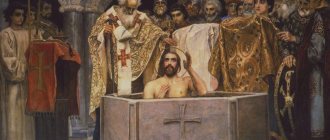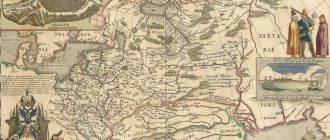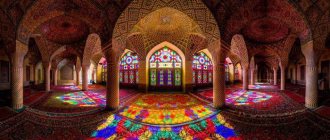The Kryashens are an ethno-confessional group that is part of the Tatars of the Ural and Volga regions. Another name is baptized Tatars, Tatarlars. The nationality began to form in the 16th and 17th centuries in the process of Christianization of the Volga Tatars. The Kryashens included representatives of different ethnic groups, among which the following elements can be distinguished:
- Chuvash
- Nogai-Kypchak
- Mordovian
- Misharsky
- Udmurt
- Mari
All of them were divided into several different ethnographic groups of Kryashens:
- Kazan-Tatar
- Molkeevskie
- Elabuga
- Chistopolsky
- nagaybaki
The latter became a separate nationality in 2002. Officially, science considers the Kryashens as part of the Tatars. Most representatives of the nationality consider themselves a separate people.
Story
In accordance with the traditional version, the origin of the Kryashens was significantly influenced by Turkic and Finno-Ugric components. The decisive influence on the formation of the people as a separate community was exerted by the process of Christianization of the Tatar people of the Volga region, occurring from the mid-16th to 17th centuries, and the Christianization of non-Russian peoples of the Volga region at the beginning of the 18th century. As a result, 5 ethnographic groups of Kryashens were formed, which had specific differences.
Mix of styles
It so happened geographically that the Tatars lived between Europe and Russia, the East and Central Asia. Over the centuries there has been contact with them. First, Rus' was captured by the Tatars, and after the fall of the Horde they became part of Rus', a Christian state. Naturally, this led to a mixture of styles of temple architecture.
The first mosques were more like fortresses, since the Horde was endlessly at war. There was no time for beauty then, and during these battles many temples were destroyed. Restoration and construction of new ones began when the Tatars had already become part of Russia. Not only Islamic builders and engineers, but also Christian ones had a hand in mosque projects.
And the most striking example of cooperation between two faiths was the Anapovo mosque in the city of Kazan. Its construction began during the reign of Catherine 2 in 1768, under the personal leadership of the Empress.
Moreover, mixing occurred in everyday life, speech, writing, and interethnic marriages were not uncommon. Tatars and Russians have been in contact for centuries and there has been borrowing in both directions.
Return to contents
Language
In the process of formation, the people developed their own dialects of the Tatar language, of which 4 main ones are distinguished:
- the dialect of the Molkeev Kryashens (a western dialect of Tatar);
- dialect of the Zakazan Kryashens (middle dialect of Tatar);
- dialect of Chistopol Kryashens (middle dialect of Tatar);
- dialect of the Kryashens of the Lower Kama region (middle dialect of Tatar).
The main difference between all dialects is the preservation of old Tatar archaic words, a small number of farcisms and Arabisms.
In tsarist times, the people used the N. Ilminsky alphabet, which differed from the modern Tatar. It began to be developed in 1862, and was finally formed by 1874. Unlike Russian, it had 4 additional letters that are needed to convey the sounds of the Tatar language. The alphabet was not officially approved. In 1930, after the introduction of the new Turkic alphabet Yanalifa, the use of the Ilminsky alphabet was discontinued until the 90s of the 20th century. It began publishing liturgical books and literature from public Kryashen organizations. The use of the Tatar standard alphabet has been preserved in secular life. Almost all Kryashens are bilingual and speak Russian.
Faith in Christ
Today, approximately 20% of the Turkic-speaking population professing Christianity lives in Russia. Both religions spread at the same time and somewhere (the Crimean peninsula), the teachings of Christ came earlier.
Having joined Russia, Christian churches began to be built on the site of mosques destroyed by the war, on the orders of Ivan the Terrible. The Tatars had nowhere to go and people accepted a new faith. They are often called the ethnonym - “thrown”. This happened on the territory of the Volga and Ural regions.
| Interestingly, in Tatarstan itself the number of Christians reaches 40 percent and this number is constantly growing, since children in mixed marriages are usually baptized. |
Religion
After the process of Christianization, the Kryashens for a long time did not have priests who could explain to the people the foundations of the Christian faith in their native language. There were no clear translations of the Gospel. As a result of such religious isolation, the Kryashens began to develop independently in this area. They partially borrowed Islamic customs, and pre-monotheistic religious views were present. Thanks to the translator Nikolai Ilminsky, the life of the people began to gradually approach the life of Orthodox Christians. He translated divine services and the Holy Scriptures into the language of baptized Tatars, organized schools for them, created the Kryashen alphabet, and educated a large number of representatives of the Kryashen intelligentsia.
In the 1930s of the 20th century, the Soviet government began a policy of consolidation of ethnic groups, uniting the Kryashens with the Kazan Tatars. As a result, the people lost their autonomy, and cultural and educational institutions of the Kryashens began to close. Due to the inculcation of atheism, many lost the opportunity to practice Orthodoxy. Today the people have priests and churches.
The Molkeev Kryashens remember that their ancestors were of Muslim origin. There are Muslim cemeteries in the villages; these graves were the main object of worship. The most popular grave of Khoja Hassan, located in the village of Khozesanovo, is the grave of Malka Babai in Molkeevo. Together with visiting Muslims, the Kryashens visit them during sacrifices, prayers, and resort to the help of mullahs.
Followers of the prophet
The founder of this confession was, as mentioned above, Muhammad. He was an ordinary person, engaged in trade, but after a vision he began to preach the word of Allah publicly. According to history, Muhammad was not the son of God, but a mediator - a prophet.
After some time, he gained admirers. The teaching gained popularity and spread among more and more peoples and states. And two centuries after its founding, it came to the Tatars. Along with the new religion came Muslim architects who built mosques for them. This accelerated the popularization of Islam.
Food
The national Kryashen dish is dumplings. They are prepared with a filling of cottage cheese, onions, eggs, sugar, and salt. The diet is based on flour and cereal dishes. For meat they eat lamb, beef, geese, ducks, chickens, they prepare jelly (koyka), Orthodox Christians eat pork. Animal blood is also consumed as food. Various products are prepared from milk: sour cream, cottage cheese (sezme, eremchek), butter, sour milk (katyk), cheese “chygyt”. The Kryashens widely use mushrooms, cabbage, and vegetables in their cuisine. Broth with pieces of dough is common among first courses. The main drinks are tea, a mixture of katyk with water (eyran), beer (cheese), kvass, moonshine (kumyshka), drinks made from honey, including alcoholic ones.
Religious holidays of Tatarstan
Fasting Ramadan, Eid al-Adha and Kurban Bayram are the most revered holidays according to Muslim tradition. The most significant of all is Kurban Bayram - the festival of sacrifice. Celebrated in memory of the willingness of the prophet Ibrahim to sacrifice his son to Allah. A few weeks before the start of the holiday, the Tatars begin to fatten the sacrificial animal. On the day of Eid al-Adha, it is mandatory to prepare food from meat.
Eid al-Fitr is celebrated at the end of thirty days of fasting in the month of Ramadan. In the morning, after tasting sweets, Muslims head to the mosque, and in the evening they have a festive family feast.
A true Muslim is obliged to observe the basic principle - purity of soul. Reading the Quran is the basis for sins to be forgiven. For this purpose, the houses are put in order, excess rubbish is thrown away, and sweet dishes are prepared.
Prayers pay tribute to the departed. On days like these, people forgive each other. During fasting, restrictions are observed, Muslims visit sick relatives, and pray a lot. And on the night of predestination they voice requests to Allah, hoping for their requests to be fulfilled. There is a tradition of honoring prophets on certain days of the year.
Appearance
Cloth
Men wore a shirt-shirt, which was belted with a patterned wool belt (aziar). Women wore a white knitted headdress made of cotton fabric (ak kalfak), married women wore a headdress (suryake), over which they tied a scarf. The older women wore a headband in the form of a turban, and the Elabuga Kryashen women wore a coin headband. Women used a lot of jewelry made from coins, a sling over the shoulder (devet), bracelets, braids, and neck jewelry (chelbyr). Men wore gray felt hats and a Russian cap in summer. Winter outerwear of the Kryashens - sheepskin coat, fur coat, azyam. For footwear they wore bast shoes, cloth stockings, and rarely wore onuchi. Later, Russian boots and women's shoes appeared in the use of the Kryashens. The Kryashens sewed and decorated all their clothes themselves; they rarely resorted to buying factory-made fabrics, which were mainly used to decorate women’s dresses.
Housing
The Kryashens built dwellings of one or two floors, with a vestibule (oh aldy) and a hut (oh), three-chamber huts with a stove. The layout of a dwelling of the northern-Central Russian type. A stove was placed at the entrance, there was a red corner “koyash pochmak”, where icons and religious books were placed. There was a place of honor (tur) at the front wall of the house; they slept on bunks (seke). A special feature of the Kryashen hut was a bench located along the side wall, above the door. The platbands, corners of the house, and gates were decorated with relief carvings of a zoomorphic, geometric type.
Tatars of Siberia
An interesting situation with religion is developing among the indigenous Turkic peoples of the West and South of Siberia. In this region, the Tatars mixed the Muslim faith with shamanic practices, such as animal spells and communication with spirits. This happened for two reasons:
- During the Horde, the Mongol did not care much about Siberia and who the controlled tribes worshiped; their goal was to enrich themselves through the war with Russia and Europe.
- After joining Russia, they found themselves in isolation, as it were, due to their distance from Moscow. Therefore, they developed independently; they even had shamans as preachers and teachers.
Culture
The oral creativity of the Kryashens includes various genres; the main place in folklore is occupied by family and calendar ritual songs. Archaic ritual chants for Maslenitsa, Christmastide, Trinity, Peter's Day, and other holidays have been preserved. The Kryashens perform formulaic melodies of calendar songs in polyphonic voices. During the round dances of the spring-summer period, which were held every evening from Trinity to Peter's Day, round dance songs were sung.
Family ritual folklore includes:
- wedding songs, which include songs of related families, a song for taking the bride away from her parents' house, the bride's lament, drinking songs;
- guest songs.
The songs of the Kryashens are lyrical, drawn-out, with choruses. The style of ritual chants is similar to the traditional chant of the lower Chuvash, southern Udmurts, and eastern Mari. Performs folk and Tatar songs, modern and traditional. Since 2001, in the village of Zyuri, Mamadysh district of the Republic of Tatarstan, the republican holiday of traditional culture of the Kryashens “Pitrau ken” has been held.
Who are the Tatars?
A people living in the territory of the central and eastern parts of Russia, united by a common language - Tatar (Turkic with its various dialects, depending on place of residence) and a single religion. If you look at the map, you can distinguish three regions by which they are divided into ethnic types:
- Volga region (Republic of Tatarstan);
- Crimean peninsula;
- Siberia (Baikal territory)
The first mention of the term “Tatars” dates back to the 6th century, among the Mongol-Manchu tribes that roamed eastern Siberia. And, in the 13th century. with the spread of the Golden Horde, the term became known in Europe.
However, despite the common name, these ethnic groups have different ancestors. Research by scientists has shown that within each of these groups there is a large genetic diversity that was formed independently of the others. For clarity, this is an example of nationality: the British and Russians developed separately, but once they had common ancestors.
But, regardless of origin, the religion of the Tatars and language unites them into one people.
Traditions
The Kryashens preserved ancient rituals longer than other groups of Tatars. There were sacrifices to patron spirits (kiremets). On Christmastide “Nardugan,” door-to-door rounds of mummers, youth games, and fortune telling were held. On Maslenitsa (Mai Bayrame) they organized sleigh rides from the mountains, on the second day of Easter - rituals of the all-Tatar Sabantuy, treating them to porridge (byarmyanchek botkasy), door-to-door collection of colored eggs, and competitions on the Maidan (suryan). On Trinity Day “Troicha”, “Truchin”, “Yaprak bairame” or Peter’s Day “Pitrau” funerals, Dzhien rituals, guest appearances, and youth games were organized. From Easter to Peter's Day, young people organized round dances.






